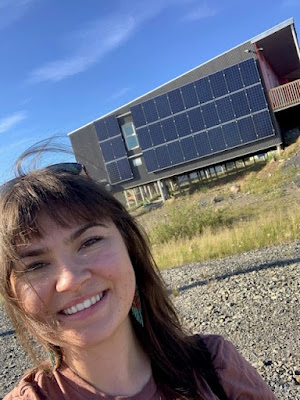By Tara Myran, 2nd year MDP student
Anniin,
My name is Tara Faye Myran and I currently live on my ancestral homelands, Treaty 1 Territory located along the Red River. I am from Long Plain First Nation and Swan Lake First Nation both located in Southern Manitoba, and I am of Ojibway and Dakota descent from both my parents.
This year, I chose to complete my second field placement at the National Collaborating Centre for Infectious Diseases (NCCID). This pan-Canadian knowledge translation organization is located at University of Manitoba’s Bannatyne campus within the Health Science Centre. I was provided the opportunity to work hybrid which worked great! At NCCID I worked under the direction of Dr. Claudyne Chevrier who mentored and guided me for each of the projects I was working on.
My role at this field placement was to work with my supervisor on two innovative projects that are geared towards partnership and knowledge translation.
The first project is called Joint Action for Equity – Stories of primary care and public health partnership and the second is the Tuberculosis Patient Journey for Northern First Nations Communities.
The Joint Action for Equity project documents partnerships between public health and primary care, especially as they relate to health equity. My involvement in the Joint Action for Equity project focused on exploring a particular story of the Manitoba First Nations Covid-19 Vaccine Roll-out.
The second project I was involved with was the Tuberculosis Patient Journey for Northern First Nations Communities and I found it to be an innovative and unique tool for public health and health care practitioners. The online tool is a depiction of the stages of tuberculosis infection, but more importantly, the many Indigenous and social factors that influence a person’s journey with TB. The project is a collaboration with many First Nations experts in Canada. I worked on revising the scripts for introductory videos to highlight more positive aspects of data and capture the strengths of utilizing these types of webtools to address issues such as tuberculosis. I also revised some of the sections of the platform, including education, quality of life and health which I found to be beneficial for me as a future MDP Practitioner.
I am grateful for the opportunity of conducting my field placement at NCCID. I walked away with many skills such as time management, learning to analyze how knowledge translation is transmitted to public health and health care practitioners and literature reviews. Understanding the importance of how knowledge translation is used in different platforms such as video scripts and mapping is something that I look forward to utilizing in the future.
This field placement course was my last course to be completed upon graduation set for this October 2022.
“Having the opportunity to work at NCCID allowed me to learn, grow and apply what I have been taught during my last two years of the MDP program. I encourage my fellow colleagues to look at NCCID as a future field placement.”



